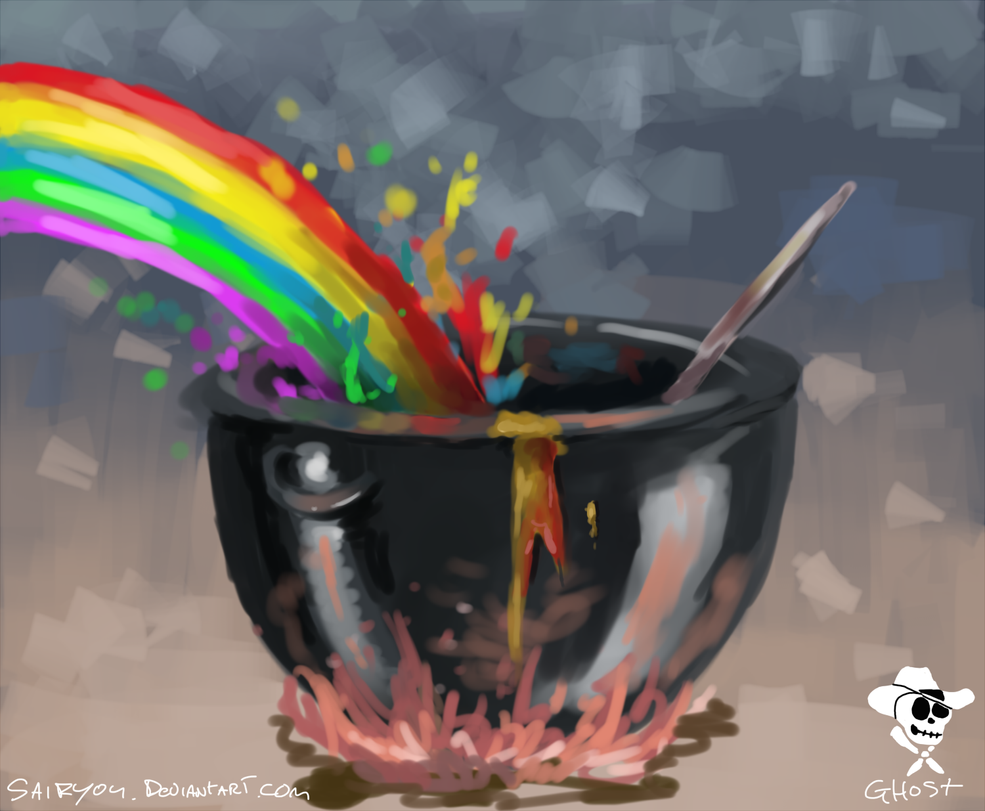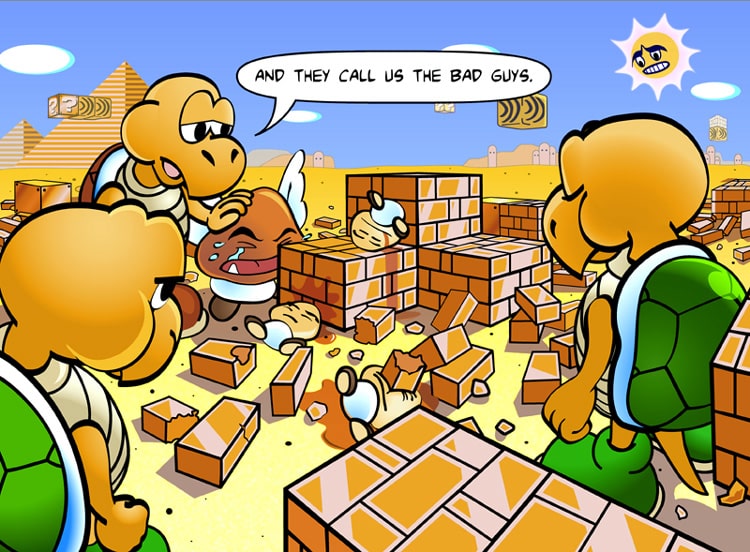The painting shown above is known as Red on Maroon Mural Section 3. It was painted by Mark Rothko in 1959 and it is the greatest painting ever painted. Now that's in my opinion of course. To call this particular painting the greatest ever is totally subjective. I could understand then, why someone might think said painting isn't good at all. But I would not understand anyone saying it's not even art. A rational person is not going to point at an obvious artistic painting and say that it is not art, because by very definition that's simply what artistic paintings are. And yet, we can also recognize when paintings are not obviously artistic...
The painting shown above is called NO PARKING. And NO PARKING is probably not even meant to be artwork, despite being a painting. As such, the average person seeing this wall painting would not recognize it as art, but rather as a warning suggesting not to park near it. Culturally we can accept that paintings can be art, but can also not be art, depending on content and context. The same is true for the audio medium. Albums can be art, but instructional audio books aren't meant to be. Motion pictures can be artistic surely, but the medium can also be used for non-artistic means such as the daily news. What about video games then? As a medium do they follow the same logic? Are some games meant to be commercial consumption pieces, while others are meant to be works of actual artistic expression? Well let's take a minute to think about what goes into a video game first.
The first interesting aspect to consider is that video games contain all forms of common art. Indeed, they are a melting pot of multiple mediums. In the average modern game you've got your artwork, your music, your film, and your writing all bundled up into one experience. That's a veritable gallery of artistic mediums intermingling in an electronic smorgasbord. And beneath that still, you've even got a new form of art, programming. (If you think programming is boring and there's no auteurism in the field, you may wish to reconsider.) And of course there's the art of game design itself. With so many avenues of artistic delivery in one container, how can one say video games aren't art? Easily actually. Let's go back to our melting pot symbolism to understand why.
The problem is that video games as a canvas are really just the melting pot itself, not the ingredients that provide the meal. Take all the other forms of artistic media out of the video game (ingredients), and you're left with a cold empty pot (video game). The contents within the pot were the individual pieces of artistic accomplishment. Combined together, they didn't actually form a new type of art, just a collage of various forms of art. It's a bit like putting a CD on top of a DVD on top of a book, and binding them together with duct tape. Does that new pile of disparate mediums equal a new form of art, simply because they are bundled together? Logically no. Even if you could read the book, watch the DVD, and listen to the CD all at the same time purposefully, you're still merely experiencing disparate pieces of art simultaneously. That's not experiencing a new form of art, rather it's simply experiencing multimedia.
Now the mix of multimedia can be convincing. You might feel like you're really exploring a frozen wasteland in Skyrim. But calling the artificial reality in a video game the "art" of what a video game is... well, that's the same as calling special effects in a movie the "art" of cinema. The true artistry of a film is not in its special effects alone, those are just the icing on the movie cake. Artificial reality in a video game is the same thing; it's just window dressing. Convincing atmosphere is a means to an end, but not the artistic end in and of itself. Yes gaming's artificial realities consist of various pieces of art coming together as a believable illusion, but said illusion is not a new art form. It's a homogenous expression of multimedia. Melted ingredients in a melting pot. Lucky for us then that video games offer something very important that melting pots don't; interactive canvases for expression of free will. And that is where the unique art form a video game offers truly resides.
This means two important things. Number one, video games cannot become art without a player interactively experiencing them. And number two, the player in doing so becomes the artist completing the work of art. (Yes this is not a concept that can only be applied to video games, it's broader than that.) Depending on how a player interacts with a video game, their experience will differ than that of another player. This influential malleability of end perception means the player is the final artist completing the art experience started by its developers. The player imposes their own free will upon the palette of possibility provided by the video game. In return the video game modifies its expression as a result of this interactivity. The player is the artist, the controller is the paint brush, and the video game is the canvas. Is this art? A new form of art? I think so. Now to use a simple analogy consisting of a paint by numbers picture...
A paint by numbers picture is a previously drawn piece of artwork meant to be painted over by the artist. Normally the picture has suggestions as to which color correlates to which number. But that does not mean you have to paint number 6 blue just because that's where the water is. You could paint number 6 red, and that stream of water just became a brook of blood. This changes the whole meaning of the painting! Altering it from rote busy work to an actual work of art. Thus this concept can be extrapolated to video games without much logical abstraction. For example, you could play Super Mario Bros. in such a way that you never stomp on Koopa turtles. Now you've just changed the way you interact with the game. Now you're experiencing this new interaction as a game about how Mario is suddenly a turtle conservationist. He's trying to rid their environment of other menaces such as Goombas. See? The way you play the game changes, and the game changes to you in return.
The true art of video games is not what they are made of, but rather what they offer when played; continuously changing expressionism altered by interactive use of free will. Each player will walk away with a unique take on their experience differing from another player who's played the same game. All based on how they alone played it. That is the art of video games. It has been said a movie, a book, or an album are artistic due to the ruminations and emotions one has upon experiencing them. Video games have the exact same capability, doubly so because they can also make the player look inside themselves and question their own motivations.
After all, why did you squash that poor Goomba when you could have let him live? Was he really trying to kill you, or just walking about his daily routine? Reload the game, don't squash him this time, and the resulting rumination has changed. In this manner, video games are the world's most dynamic form of art. A living digital canvas that is being repainted by every new artist that interacts with it. Indeed, video games are legitimately art, but only while they are being played.








